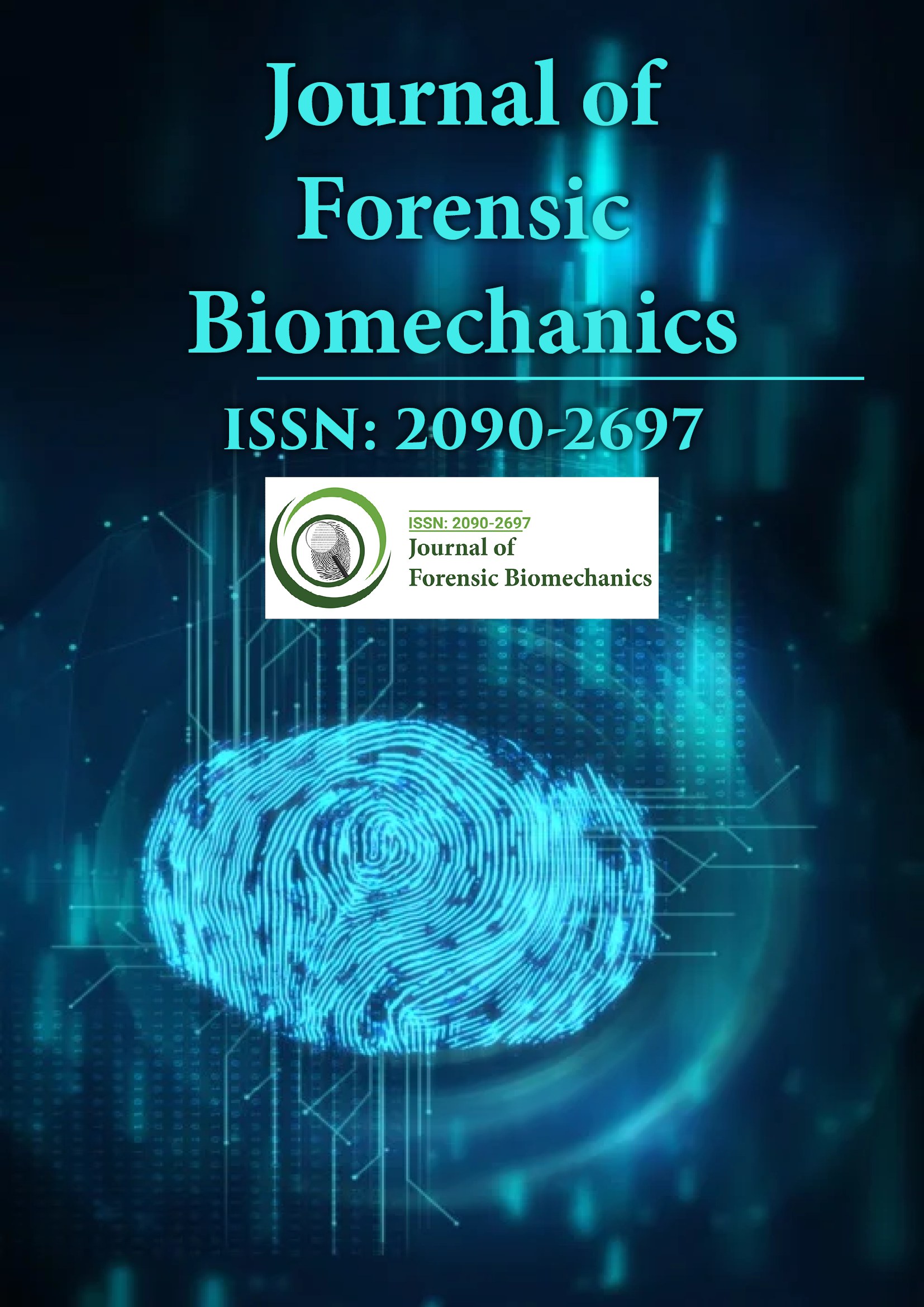Indexed In
- Genamics JournalSeek
- SafetyLit
- Ulrich's Periodicals Directory
- RefSeek
- Hamdard University
- EBSCO A-Z
- Geneva Foundation for Medical Education and Research
- Euro Pub
- Google Scholar
Useful Links
Share This Page
Journal Flyer

Open Access Journals
- Agri and Aquaculture
- Biochemistry
- Bioinformatics & Systems Biology
- Business & Management
- Chemistry
- Clinical Sciences
- Engineering
- Food & Nutrition
- General Science
- Genetics & Molecular Biology
- Immunology & Microbiology
- Medical Sciences
- Neuroscience & Psychology
- Nursing & Health Care
- Pharmaceutical Sciences
Perspective - (2024) Volume 15, Issue 2
Biomechanics of Blunt Force Trauma: Forensic Investigation Techniques
Sravya Saran*Received: 01-Jul-2024, Manuscript No. JFB-24-26588; Editor assigned: 04-Jul-2024, Pre QC No. JFB-24-26588 (PQ); Reviewed: 18-Jul-2024, QC No. JFB-24-26588; Revised: 25-Jul-2024, Manuscript No. JFB-24-26588 (R); Published: 01-Aug-2024, DOI: 10.35248/2090-2697.24.15.488
Description
Blunt Force Trauma (BFT) refers to injuries sustained from impact with a non-sharp object. Understanding the biomechanics of blunt force trauma is fundamental for forensic investigations, as it provides insights into the nature, severity, and potential intent behind the injuries. This field integrates principles from mechanics, anatomy, and forensic science to reconstruct and interpret injury patterns in the context of criminal investigations.
Biomechanics of blunt force trauma
Biomechanics, the study of mechanical principles applied to biological systems, helps forensic experts analyze how blunt force injuries occur. When a blunt object strikes a body, it transfers kinetic energy to the tissues, causing deformation and damage. The outcome depends on several factors including the object's size, shape, velocity, and the impact's angle and force.
Force distribution: The distribution of force over an area is a critical factor. A large, flat surface distributes force more evenly, potentially causing less localized damage compared to a small, pointed surface which concentrates force and causes more severe injury in a specific area. For example, a punch may cause a contusion or bruise, while a blow with a hammer might lead to a fracture.
Impact dynamics: The dynamics of the impact include velocity and direction. High-velocity impacts are likely to cause more significant injuries than low-velocity ones. Additionally, the angle of impact can influence the type and pattern of injuries. For instance, a direct hit might cause a linear fracture, while an oblique angle could result in a more complex fracture pattern.
Tissue response: Human tissues respond differently to impacts based on their composition. Skin, muscle, and bone each have unique mechanical properties and tolerances. Skin is more prone to abrasions and contusions, while bone can suffer from fractures and internal damage. The impact energy absorbed by tissues can lead to varying injury patterns such as lacerations, hematomas, or broken bones.
Forensic investigation techniques
Forensic investigations of blunt force trauma involve a combination of physical examination, medical imaging, and biomechanical analysis to determine the nature and cause of injuries. Key techniques include:
Physical examination: Detailed physical examination is the first step. Forensic pathologists assess the injury patterns, noting characteristics such as bruising, swelling, and lacerations. They document the size, shape, and location of injuries to infer the type of object used and the force applied.
Medical imaging: Techniques such as X-rays, CT scans, and MRIs provide insight into internal injuries that may not be visible on the surface. X-rays are particularly useful for identifying bone fractures, while CT scans and MRIs can reveal soft tissue damage and complex fracture patterns.
Biometric reconstruction: In some cases, forensic experts use computer simulations and models to recreate the impact scenario. By inputting data such as object size, impact force, and angle, they can visualize how the trauma might have occurred. This helps in understanding the mechanism of injury and verifying witness statements or suspect claims.
Conclusion
The biomechanics of blunt force trauma is a sophisticated field that combines principles of mechanics with medical and forensic science. By understanding the forces at play and employing various forensic techniques, investigators can accurately reconstruct injury scenarios and contribute to legal outcomes. The integration of biomechanical analysis into forensic investigations not only aids in solving crimes but also in improving the accuracy of injury assessments, ultimately serving justice and advancing our knowledge of trauma mechanisms.
Citation: Saran S (2024) Biomechanics of Blunt Force Trauma: Forensic Investigation Techniques. J Forensic Biomech. 15:488.
Copyright: © 2024 Saran S. This is an open-access article distributed under the terms of the Creative Commons Attribution License, which permits unrestricted use, distribution, and reproduction in any medium, provided the original author and source are credited.

